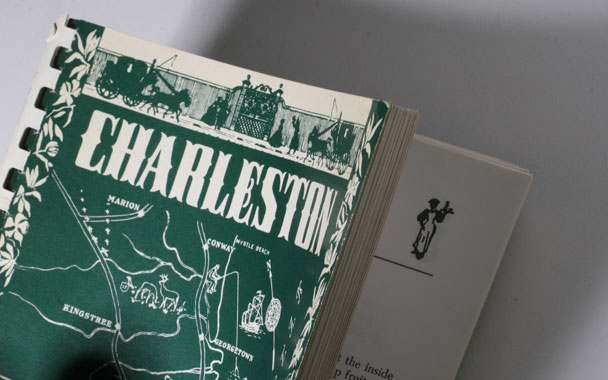Unlike so many of the community cookbooks that are published today—polyglot collections with no regional identity whatsoever—Charleston Receipts, first published in 1950 by the Junior League of Charleston and now in its 32nd printing, reflects a real sense of place and time. I can't vouch for the newer editions because I still use my mother's copy—dog-eared, tomato-spattered, and held together with masking tape. The tomato stains are mostly on page 144, which holds the receipt (Webster's Collegiate 11th edition, I'm delighted to see, still gives the first definition of that word as "recipe") for red rice, a staple of the Lowcountry and of my childhood. There was always a big pot of it in the refrigerator, and a generous spoonful was a favorite after-school snack. Leaving aside the references to canned soup, oleo, and other store-bought products, the food inside the book reflects the rich provisions of a subtropical region—seafood, game, vegetables, rice—and was shaped to a very large extent by West African and Caribbean hands. The range is simply extraordinary. There are almost 50 drink recipes alone, including one for a rum punch that serves 300 and one for the cordial called cherry bounce that begins: "Go to Old Market and get a quart of wild cherries." I'm especially fond of the canapé chapter—benne (sesame) seed "cocktailers," cheese straws (add a little extra cayenne), shrimp paste, pickled shrimp—but other treasures include pepper jelly and pickled okra (now considered icons of the South for some mysterious reason, but, in fact, created after World War II), scalloped oysters, crisp corn sticks, and spiced grapes, which are made with local scuppernongs or muscadines and served with game. Just thumbing through the pages, I can taste the place.


